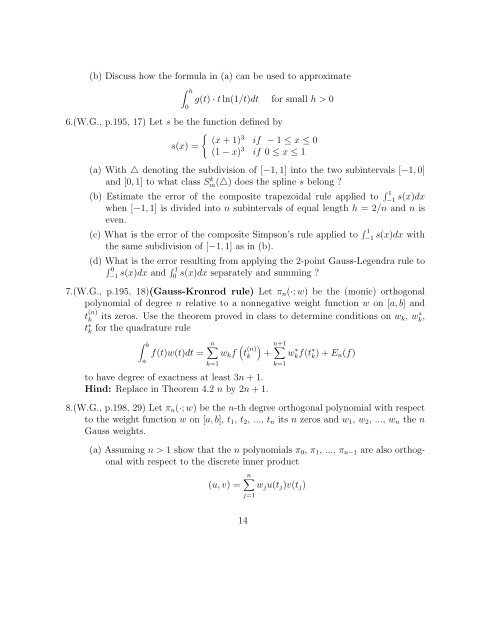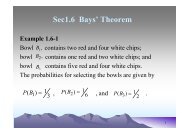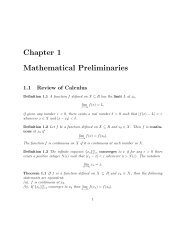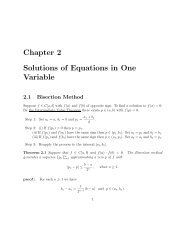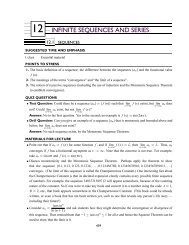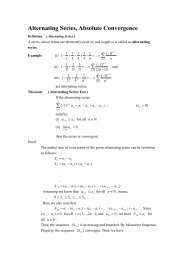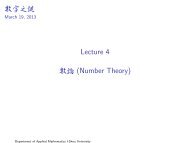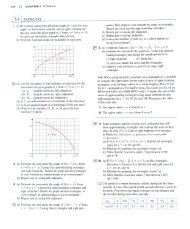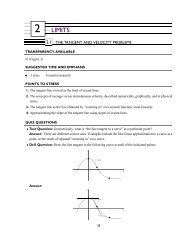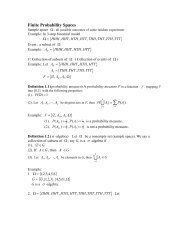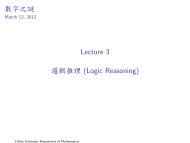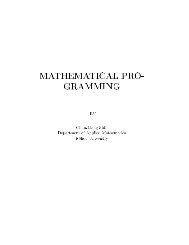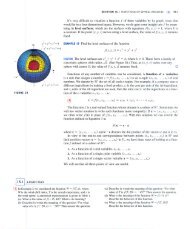Chapter 4 Numerical Differentiation And Integration
Chapter 4 Numerical Differentiation And Integration
Chapter 4 Numerical Differentiation And Integration
Create successful ePaper yourself
Turn your PDF publications into a flip-book with our unique Google optimized e-Paper software.
(b) Discuss how the formula in (a) can be used to approximate<br />
∫ h<br />
g(t) · t ln(1/t)dt for small h > 0<br />
0<br />
6.(W.G., p.195, 17) Let s be the function defined by<br />
{<br />
(x + 1)<br />
3<br />
if − 1 ≤ x ≤ 0<br />
s(x) =<br />
(1 − x) 3 if 0 ≤ x ≤ 1<br />
(a) With △ denoting the subdivision of [−1, 1] into the two subintervals [−1, 0]<br />
and [0, 1] to what class S k m(△) does the spline s belong ?<br />
(b) Estimate the error of the composite trapezoidal rule applied to ∫ 1<br />
−1 s(x)dx<br />
when [−1, 1] is divided into n subintervals of equal length h = 2/n and n is<br />
even.<br />
(c) What is the error of the composite Simpson’s rule applied to ∫ 1<br />
−1 s(x)dx with<br />
the same subdivision of [−1, 1] as in (b).<br />
(d) What is the error resulting from applying the 2-point Gauss-Legendra rule to<br />
∫ 0<br />
−1 s(x)dx and ∫ 1<br />
0 s(x)dx separately and summing ?<br />
7.(W.G., p.195, 18)(Gauss-Kronrod rule) Let π n (·;w) be the (monic) orthogonal<br />
polynomial of degree n relative to a nonnegative weight function w on [a,b] and<br />
t (n)<br />
k its zeros. Use the theorem proved in class to determine conditions on w k , wk,<br />
∗<br />
t ∗ k for the quadrature rule<br />
∫ b<br />
a<br />
f(t)w(t)dt =<br />
n∑<br />
k=1<br />
w k f ( t (n)<br />
k<br />
to have degree of exactness at least 3n + 1.<br />
Hind: Replace in Theorem 4.2 n by 2n + 1.<br />
) n+1 ∑<br />
+ wkf(t ∗ ∗ k) + E n (f)<br />
k=1<br />
8.(W.G., p.198, 29) Let π n (·;w) be the n-th degree orthogonal polynomial with respect<br />
to the weight function w on [a,b], t 1 , t 2 , ..., t n its n zeros and w 1 , w 2 , ..., w n the n<br />
Gauss weights.<br />
(a) Assuming n > 1 show that the n polynomials π 0 , π 1 , ..., π n−1 are also orthogonal<br />
with respect to the discrete inner product<br />
n∑<br />
(u,v) = w j u(t j )v(t j )<br />
j=1<br />
14


